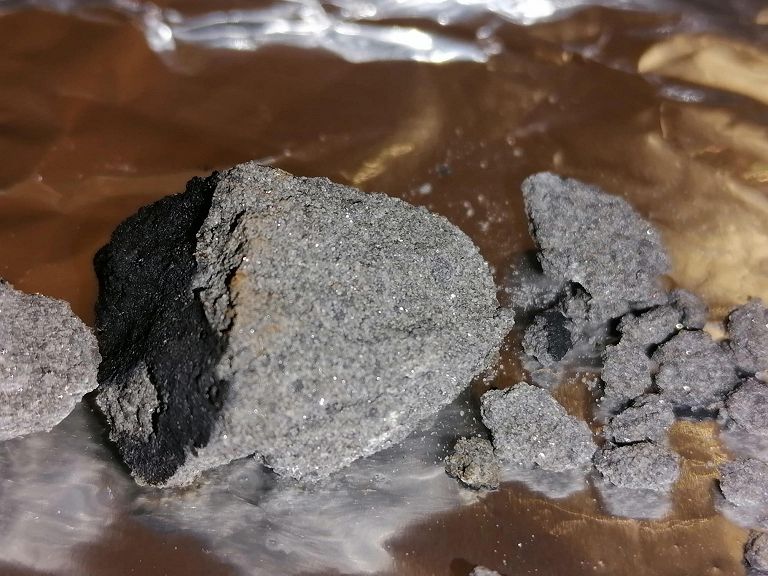Another find of the Valentine's Day bolide was found yesterday, the fragment of a meteorite that ended up on the floor of a house in Matera on February 14th.
The news was released this morning during a press conference coordinated by the mayor Domenico Bennardi. The meeting was attended by Giovanni Pratesi of the University of Florence, Daniele Gardiol of the Inaf of Turin and national coordinator of the Prisma network, the First Italian Network for the Study of Meteors and the Atmosphere of the National Institute of Astrophysics.
The find was found, with a magnet, near the house by Silvia Padilla together with Pierluigi Cox, of the Terni amateur astronomers association. For consistency and with a weight of around ten grams, it is the largest among the 100 of different sizes collected - for a total of 70 grams - ranging from a few microns to two to three grams.
handle
Meteorite found, fell at 300 km/h on a balcony in Matera
The experts have announced a process of analysis and investigation that will last a year and will involve national and international scientific bodies. Tomorrow, it was explained, the fragments will reach the Gran Sasso Laboratories, to measure the isotopes. Petrographic investigations and optical and electron microscopy will follow. The Open University (England) is also involved for investigations with oxygen isotopes.
The certification of the international body will come at the end of the analysis of the results: "We expect important information - said Pratesi - concerning the origins and development of our system. The material is interesting and in sufficient quantity to conduct all the necessary analyzes."
For his part, Carmelo Falco (Rete Prisma) spoke of an exceptional discovery, which took place a few hours after the sighting of the meteorite: "It was an exceptional event. A great research, fruitful. There have been three finds of interesting fragments. The research continues but we are largely satisfied'.
"On Tuesday the fragments of the meteorite of February 14 will arrive in the Gran Sasso National Laboratories of L'Aquila," announced the astronomer of the National Institute of Astrophysics (INAF), Daniele Gardiol. In the laboratories of L'Aquila, in November, the analysis on the Winchcombe meteorite was performed. It is a rare carbonaceous meteorite recovered in the Gloucestershire area of England in February 2021.

